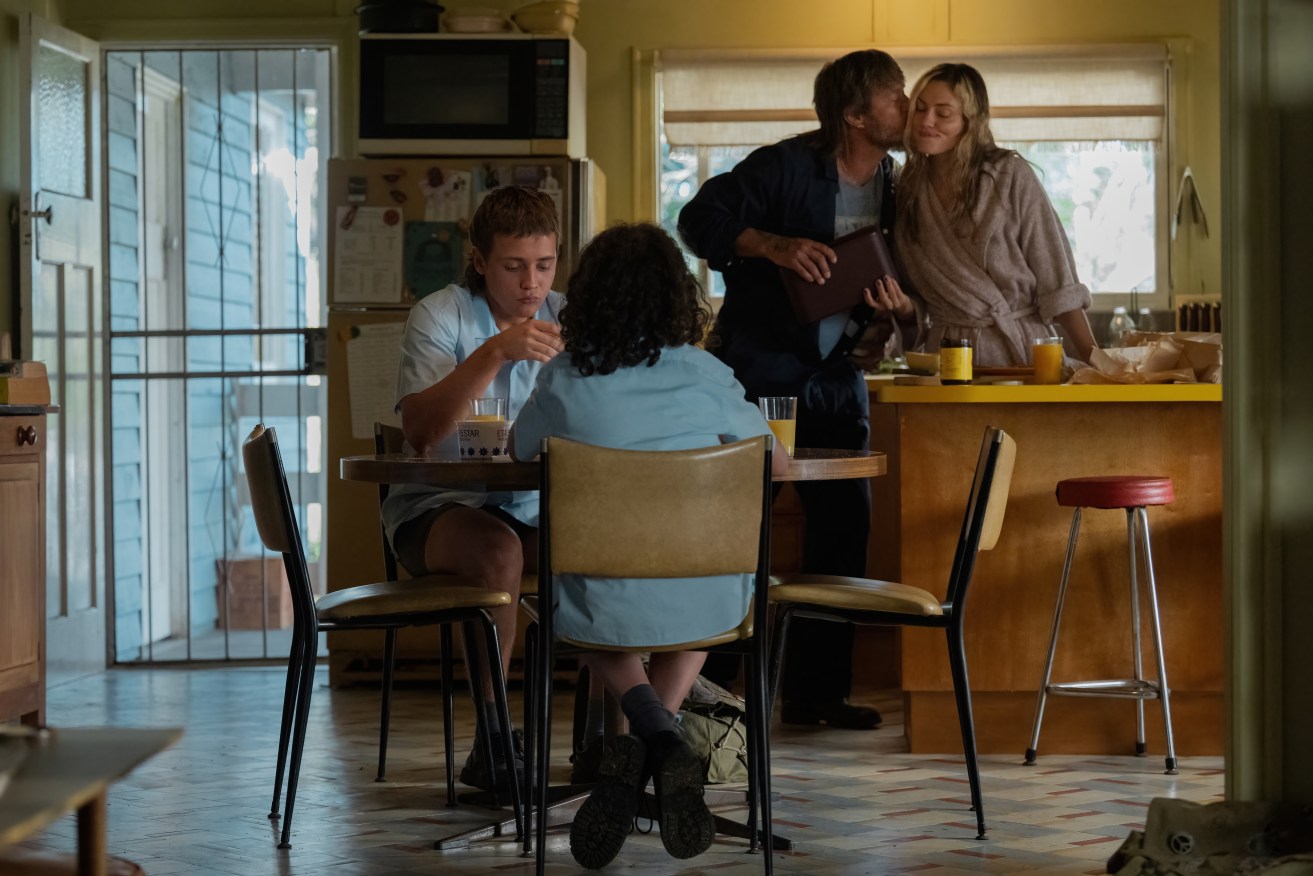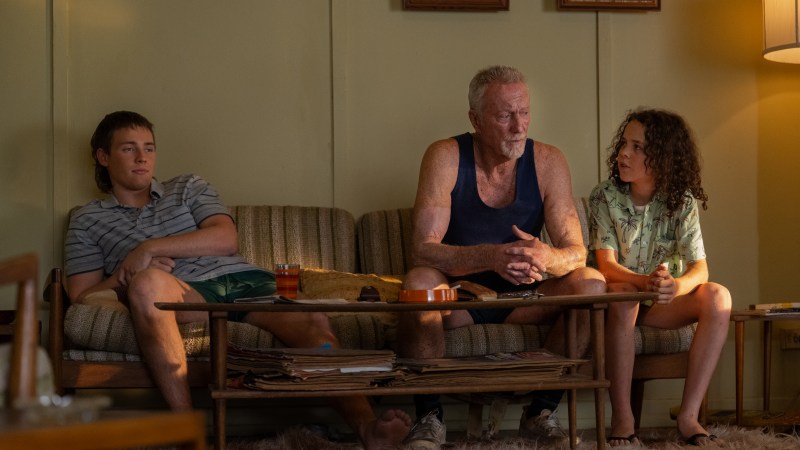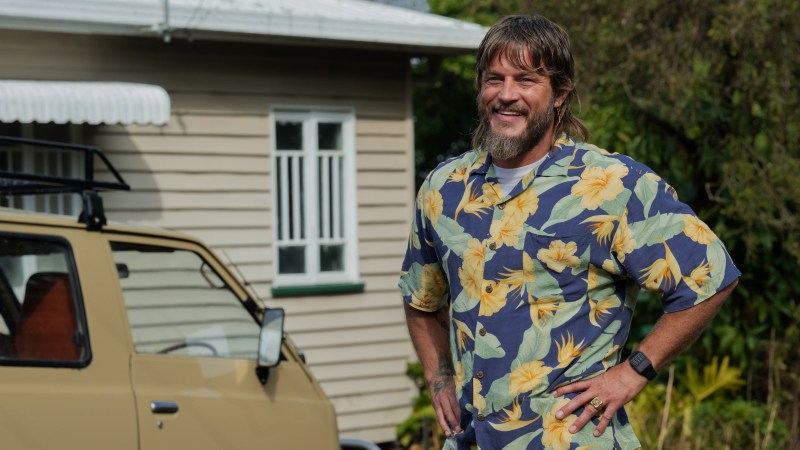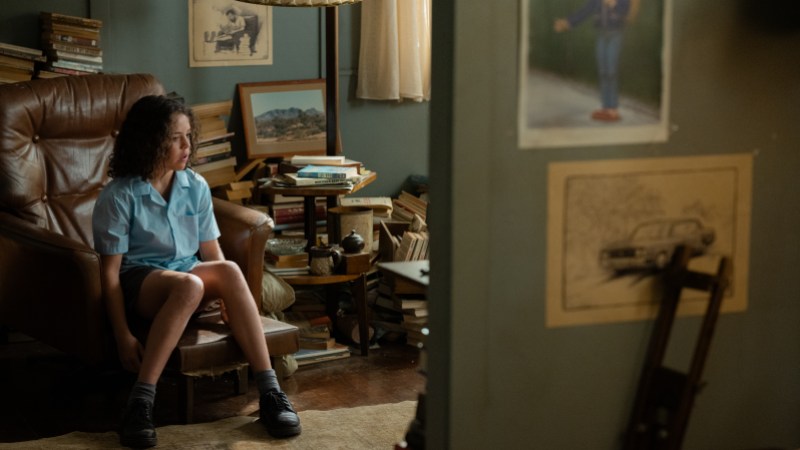Extract from The New Daily

Four days after Boy Swallows Universe went live on global streaming giant Netflix it has become an international phenomenon.
With a stellar cast of veteran Aussie actors and some jaw-dropping youngsters, the Trent Dalton best-selling book of the same name hit No.5 on the global most watched TV show list between January 8 and 14.
Audiences all over the world tuned in (3.5 million in fact), many admitting they binged the entire seven-part series in one hit – it reached No.2 in the UK and No.4 in Norway – hooked by the story about a boy and his loveable, drug-dealing family set in a working-class suburb of Brisbane in the 1980s,
“The hope, the skies, the Aussie playlist,” wrote one fan on Dalton’s Instagram.
“I’m on the edge of my seat. It’s brilliant!! As a kid who grew up in [suburban] Jindalee/Darra in the ’80s I have had such an affinity with this story and seeing it on screen, portrayed so well, is everything,” wrote another.
Just like Netflix’s Bluey, Fisk and Last Stop Larrimah, Prime Video’s Deadloch, Apple TV+’s The Lost Flowers of Alice Hart and Stan’s The Tourist, we can thank – in part – streamers for giving overseas audiences a glimpse into our culture, national sports, quirks, language and idiosyncrasies.
“You cannot seperate the function of Netflix from the success of this series, they are inextricably linked,” explains senior lecturer in creative studies at Queensland University of Technology, Professor Ruari Elkington.
“But when Netflix commissioned this, it would have been far from a ‘sure thing’, so it’s a credit to the quality of Australian storytelling talent that fought for a distinctive and authentically Australian – and Queensland – voice for this project.”
So why do audiences love these local productions and why are people identifying with the Australian story?
“The success of these shows, Bluey in particular and now Boy Swallows Universe, reminds screen creators of a truism that is being repeatedly underscored by the global reach of Netflix – if you try and make something for everyone, you end up making something for no one,” he said.
“While it seems counterintuitive, for those really carefully crafted and thematically deep screen stories, the more they are anchored for audiences in a specific time and place, the greater their authenticity and the more universally appealing they become.”
Source: Netflix
‘Distinctive, culturally specific storytelling’
Boy Swallows Universe is a coming-of-age crime thriller told through the eyes of Felix Cameron (Penguin Bloom), who plays 12-year-old Eli Bell.
His stepdad Lyle, (Travis Fimmel) is a drug dealer, his mum Frankie, (Phoebe Tonkin, Babylon, Transfusion) lives with addiction and his elderly babysitter Slim, (Bryan Brown) served 25 years in jail.
His brother Gus (Lee Tiger Halley, Crazy Fun Park) is a poetic clairvoyant with selective mutism.
The Brisbane location shoots, interior set designs, suburban streets, 1980s cars, clothes (shorts and thongs), bookshelves and TV sets (playing Wheel of Fortune) cleverly transport the viewer back in time.
Emmy nominee Simon Baker and Anthony LaPaglia also play key roles.
Partly inspired by Dalton’s own upbringing – his mother spent time in jail and stepfather was a heroin dealer – the character of Slim is based on Arthur “Slim” Halliday — a convicted murderer who was known as the Houdini of Boggo Road for his notorious escapes from Brisbane’s Boggo Road Gaol.
Dalton grew up with Halliday, whom he looked to as a father figure.
“[Dalton’s] father was equal parts the most terrifying person he knew and also the most beautiful person he knew,” said Baker, who plays Eli’s father Robert.

Couch and coffee table sourced directly from a Brisbane second-hand dealership. Lee Halley as Gus Bell, Bryan Brown as Slim Halliday and Felix Cameron as Eli Bell. Photo: Netflix
Dalton, who was an executive producer on set, would dig out his own photo albums to help recreate sets, take crews on tours of the streets and local Chinese restaurants where he grew up.
“There were many days he arrived on set and just burst into tears,” director of the first two episodes, Bharat Nalluri (Shantaram) told Esquire earlier this month.
“Like when he saw his kitchen from his youth recreated in front of him in the same colours.”

Does that van, house and shirt look familiar? Travis Fimmel as Lyle Orlik. Photo: Netflix
“They recreated … every amber ashtray, every styrofoam stubby cooler, every Benson and Hedges cricket poster, every hole in the wall, every hole in the heart of my mum,” he said.
“I stepped right into my own brain. [The] most bizarre and confronting thing a bloke could ever do.”
After the series wrapped, Dalton sat down with his wife and kids and watched every episode.
“I cried so much I got thirsty. Emotionally dehydrated,” Dalton said.
“My daughters were seeing parts of their grandparents’ lives that they had no clue about, unfolding in the most unlikely place.
“It was the strangest, most cathartic, and beautiful television binge-watch any of us will ever possibly be a part of.”

Viewers have recognised paintings and books from their own 1980s childhoods. Felix Cameron as Eli Bell. Photo: Netflix
‘The multiplier effect’
As with Bluey, BSU and Fisk, Professor Elkington says that as the shows hit the Netflix Top 10 button “there is a multiplier effect”.
“The success of the series becomes a phenomenon in itself.
“While we can’t know how many individual ‘Top Picks for You’ and ‘Recently Added’ lists BSU will land in, we can say with certainty that the global audience numbers generated by Netflix far outstrips the reach of any previous channel to audience.
“This success could not have happened without Netflix, but in turn, the future success of the streamer will rely on investing in distinctive, culturally specific storytelling, even those set in suburban ’80s Brisbane.”
No comments:
Post a Comment